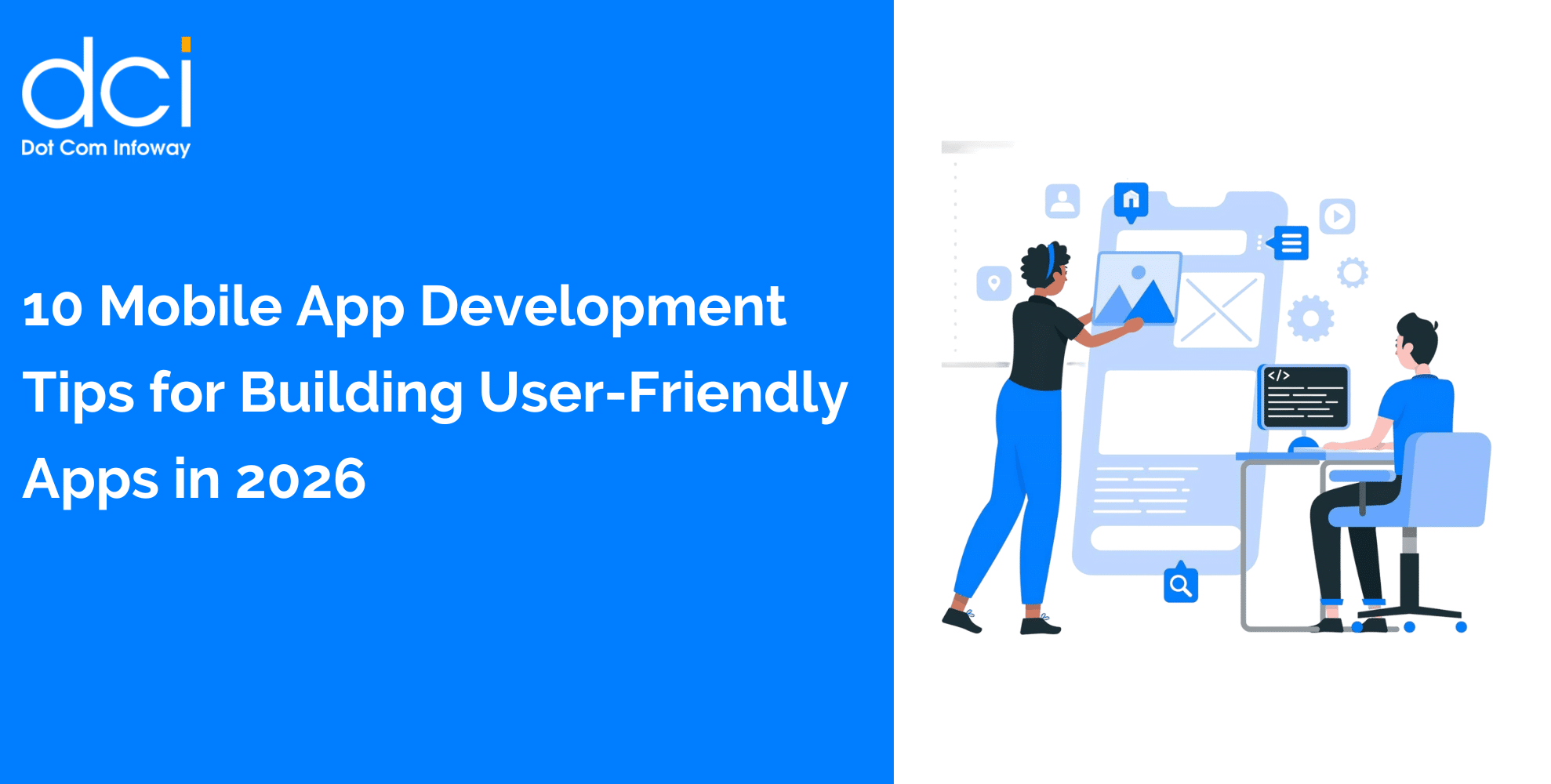The digital landscape has undergone a seismic shift. As of 2024, mobile devices generate 62.54% of global website traffic, with mobile searches accounting for over 60% of all organic search visits. This isn’t just a trend, it’s the new reality that demands immediate attention from website owners and digital marketers. Mobile SEO Best Practices have become the cornerstone of successful digital marketing strategies. Whether you’re running an e-commerce store, a local business, or a content-heavy website, optimizing for mobile users isn’t optional anymore it’s essential for survival in today’s competitive online marketplace.
How to Increase Your Website’s Traffic with Mobile SEO Best Practices
13 mins read

The Mobile-First Reality: Why Your Website’s Future Depends on Mobile Optimization
Google’s mobile-first indexing means that the search giant primarily uses your mobile version for indexing and ranking. According to Google’s Search Central documentation, this fundamental shift affects how every website is evaluated:
“Google uses the mobile version of a site’s content, crawled with the smartphone agent, for indexing and ranking. This is called mobile-first indexing.” – Google Search Central
This change has profound implications. Mobile search optimization isn’t just about having a responsive design it’s about creating an experience that prioritizes mobile users while maintaining desktop functionality.
The statistics paint a clear picture of mobile dominance. According to recent data from Statista, mobile traffic has grown from just 6.1% in 2011 to 64.35% as of May 2025. This exponential growth shows no signs of slowing down.
Real-World Impact: What Mobile Optimization Means for Business Success
Major e-commerce platforms have leveraged Mobile SEO Best Practices to dominate their respective markets. Amazon’s mobile-first approach has contributed significantly to their position as the world’s largest online retailer. Their mobile optimization strategy focuses on:
- Lightning-fast page load times (under 2 seconds)
- Streamlined navigation designed for thumb-friendly interaction
- Progressive web app functionality for app-like experiences
- Voice search optimization for mobile assistants
The results speak for themselves. Companies that prioritize mobile optimization see significant improvements in key performance indicators, including reduced bounce rates, increased session duration, and higher conversion rates.
Responsive Design SEO: The Foundation of Mobile Success
Responsive design SEO forms the backbone of any successful mobile strategy. Google recommends responsive design as the preferred method for mobile optimization because it uses a single URL and serves the same HTML to all devices, adjusted through CSS media queries.
Technical Implementation Strategy
When implementing responsive design, focus on these critical elements:
Flexible Grid Systems: Use CSS Grid or Flexbox to create layouts that adapt seamlessly across devices. This ensures your content remains accessible and visually appealing regardless of screen size.
Scalable Typography: Implement fluid typography using viewport units (vw, vh) to ensure text remains readable across all devices without requiring user zoom.
Touch-Friendly Interface Elements: Design buttons and interactive elements with a minimum touch target size of 44×44 pixels, following Apple’s and Google’s accessibility guidelines.
The Walmart marketplace has demonstrated the power of responsive design in e-commerce. Their mobile optimization strategy includes adaptive product grids, streamlined checkout processes, and device-specific image optimization, contributing to their position as the second-largest e-commerce platform after Amazon.
Mobile Page Speed Optimization: Every Second Counts
Mobile page speed optimization directly impacts both user experience and search rankings. Google’s Core Web Vitals update has made page speed a crucial ranking factor, with particular emphasis on mobile performance.
Research consistently shows that page speed dramatically affects user behavior:
- Pages loading within 1-3 seconds have a 32% bounce rate
- Pages taking 1-5 seconds see bounce rates increase to 90%
- Each additional second of load time can decrease conversions by up to 20%
Advanced Speed Optimization Techniques
Image Optimization for Mobile: Implement next-generation image formats like WebP and AVIF, which provide superior compression without quality loss. Use responsive images with the srcset attribute to serve appropriately sized images for different screen densities.
Critical Resource Prioritization: Optimize your critical rendering path by inlining critical CSS and deferring non-essential JavaScript. This technique, used by high-traffic sites like eBay, can reduce initial load times by 40-60%.
Content Delivery Networks (CDN): Distribute your content across geographically diverse servers to reduce latency. Major platforms like Shopify and BigCommerce use CDNs to ensure fast load times regardless of user location.
Core Web Vitals: The New Performance Standards
Google’s Core Web Vitals consist of three key metrics that directly impact mobile search rankings:
Largest Contentful Paint (LCP): Should occur within 2.5 seconds of when the page first starts loading. This measures loading performance and directly correlates with user satisfaction.
First Input Delay (FID): Should be less than 100 milliseconds. This measures interactivity and is crucial for mobile users who expect immediate response to their interactions.
Cumulative Layout Shift (CLS): Should maintain a score of less than 0.1. This measures visual stability and prevents the frustrating experience of clicking the wrong element due to layout shifts.
Mobile User Experience: Creating Seamless Interactions
Mobile user experience extends far beyond responsive design. It encompasses the entire user journey, from initial page load to conversion completion. The most successful mobile websites create experiences specifically designed for mobile users rather than simply adapting desktop experiences.
Navigation Optimization Strategies
Hamburger Menu Implementation: While controversial, hamburger menus remain effective for mobile when implemented correctly. Ensure your menu is easily accessible, clearly labeled, and contains your most important navigation items.
Search Functionality: Prominent search functionality is crucial for mobile users. Implement autocomplete, voice search capabilities, and smart filtering to help users find content quickly.
Breadcrumb Navigation: Clear breadcrumb trails help mobile users understand their location within your site hierarchy and navigate efficiently.
Netflix provides an excellent example of mobile-first navigation design. Their mobile app and website prioritize content discovery through intelligent recommendations, category-based browsing, and seamless search functionality optimized for touch interactions.
Mobile SEO Checklist: Essential Implementation Steps
Creating an effective mobile SEO checklist ensures systematic optimization across all critical areas. This comprehensive approach addresses technical, content, and user experience factors that influence mobile search performance.
Technical Optimization Checklist
Mobile-Friendly Test Validation: Regularly test your pages using Google’s Mobile-Friendly Test tool to identify and resolve mobile usability issues.
Structured Data Implementation: Ensure your structured data markup works correctly across all devices. Mobile users particularly benefit from rich snippets that provide quick information access.
XML Sitemap Optimization: Maintain separate sitemaps for mobile-specific content or ensure your existing sitemaps properly reference mobile versions.
Robots.txt Configuration: Verify that your robots.txt file doesn’t block mobile crawlers from accessing critical resources like CSS and JavaScript files.
Content Strategy for Mobile Devices
Scannable Content Structure: Mobile users scan content rather than reading comprehensively. Use short paragraphs, bullet points, and clear headings to improve readability.
Local SEO Integration: Mobile users frequently conduct local searches. Optimize your content for local keywords and ensure your Google My Business listing is complete and accurate.
Voice Search Optimization: With the growing popularity of mobile voice assistants, optimize your content for conversational queries and long-tail keywords.

Ready to boost your website’s rankings and online visibility?
Discover how our expert SEO services can resolve ranking issues, drive traffic, and elevate your website’s performance to the next level!
Advanced Mobile SEO Techniques: Staying Ahead of the Competition
Mobile SEO optimization continues evolving as technology advances and user expectations change. Staying ahead requires implementing advanced techniques that go beyond basic optimization.
Progressive Web App (PWA) Implementation
PWAs combine the best features of web and mobile applications, providing app-like experiences through web browsers. Companies like Twitter and Pinterest have seen significant engagement improvements after implementing PWA technology:
- Faster load times through service worker caching
- Offline functionality for improved user experience
- Push notification capabilities for user re-engagement
- Installation prompts for home screen access
Accelerated Mobile Pages (AMP) Strategy
While AMP adoption has evolved, implementing AMP for content-heavy pages can still provide performance benefits:
News and Blog Content: AMP works particularly well for news articles and blog posts, providing near-instantaneous loading times.
E-commerce Product Pages: Selective AMP implementation for product pages can improve mobile shopping experiences, particularly for price comparison and product discovery.
The Washington Post saw a 23% increase in mobile search users after implementing AMP, demonstrating the potential impact of advanced mobile optimization techniques.
Mobile SEO Tools and Analytics: Measuring Success
Effective mobile SEO optimization requires continuous monitoring and measurement. The right tools provide insights into mobile performance, user behavior, and optimization opportunities.
Essential Mobile SEO Tools
Google Search Console Mobile Usability Report: Identifies specific mobile usability issues affecting your search performance. Regular monitoring helps catch problems before they impact rankings significantly.
PageSpeed Insights Mobile Analysis: Provides detailed performance recommendations specifically for mobile devices, including Core Web Vitals scoring and optimization suggestions.
Google Analytics Mobile Performance Data: Track mobile traffic patterns, user behavior, and conversion rates to understand your mobile audience better.
Key Performance Indicators for Mobile SEO
Mobile Organic Traffic Growth: Monitor the percentage of organic traffic coming from mobile devices and track growth over time.
Mobile Bounce Rate Comparison: Compare mobile bounce rates to desktop to identify user experience issues specific to mobile devices.
Mobile Conversion Rate Optimization: Track how mobile visitors convert compared to desktop users and optimize accordingly.
Local Mobile Search: Capturing “Near Me” Traffic
Mobile devices have revolutionized local search behavior. Mobile SEO Best Practices for local businesses focus on capturing users searching for immediate solutions in their geographic area.
Local SEO Mobile Optimization
Google My Business Optimization: Ensure your business information is complete, accurate, and regularly updated. Include high-quality photos, business hours, and customer reviews.
Location-Based Content Creation: Develop content targeting local keywords and addressing local customer needs. This approach helps capture “near me” searches that predominantly occur on mobile devices.
Mobile-Friendly Store Locators: If you have multiple locations, implement a mobile-optimized store locator with map integration and click-to-call functionality.
Starbucks exemplifies effective local mobile SEO through their store locator, mobile app integration, and location-specific content strategy. Their mobile experience seamlessly connects online discovery with in-store visits.
The Future of Mobile Search: Preparing for What’s Next
Mobile search optimization continues evolving with technological advances. Understanding emerging trends helps prepare your website for future algorithm updates and user behavior changes.
Artificial Intelligence and Mobile Search
AI-powered search features increasingly influence mobile search behavior:
Featured Snippets Optimization: Mobile users frequently rely on featured snippets for quick answers. Structure your content to answer specific questions clearly and concisely.
Voice Search Integration: As voice assistants become more sophisticated, optimize your content for natural language queries and conversational keywords.
Visual Search Capabilities: Platforms like Google Lens are changing how users search on mobile devices. Optimize your images with descriptive alt text and structured data markup.
Conclusion: Implementing Mobile SEO Best Practices for Long-Term Success
The evidence is overwhelming: Mobile SEO Best Practices are no longer optional for websites seeking to maintain a competitive advantage in search results. With over 60% of searches now occurring on mobile devices, businesses that fail to optimize for mobile users risk losing significant market share to competitors who prioritize mobile experience.
Successful mobile SEO implementation requires a comprehensive approach encompassing technical optimization, user experience design, content strategy, and continuous performance monitoring. The companies that thrive in today’s mobile-first world are those that view mobile optimization not as a secondary consideration, but as the primary foundation for their digital presence.
The journey toward mobile optimization excellence requires expertise, strategic planning, and consistent execution. For businesses seeking professional guidance in implementing these Mobile SEO Best Practices, partnering with experienced SEO specialists can accelerate results and ensure comprehensive optimization across all critical areas. Companies like Dot Com Infoway provide specialized SEO services that can help businesses navigate the complexities of mobile search optimization while delivering measurable results.
Remember, mobile SEO isn’t a one-time project it’s an ongoing process that requires adaptation to changing user behaviors, algorithm updates, and technological advances. By implementing the strategies outlined in this guide and maintaining a commitment to mobile-first thinking, your website can capture the growing mobile search traffic and convert those visitors into loyal customers.
The mobile revolution has arrived, and the websites that embrace Mobile SEO Best Practices today will be the ones that dominate search results tomorrow. Start your mobile optimization journey now, because your competitors certainly have.
Latest Posts
Get the latest insights from Dot Com Infoway straight to your inbox.





![The Game Marketing Guide: Pre and Post-Launch Strategies [Infographic]](https://www.dotcominfoway.com/wp-content/uploads/2023/09/DCI-Game-Marketing-blog-1.jpg)















